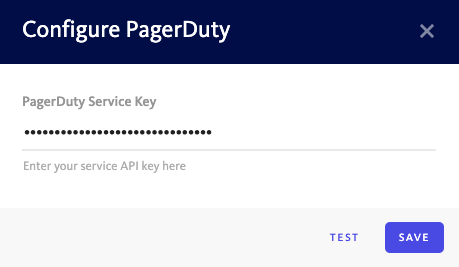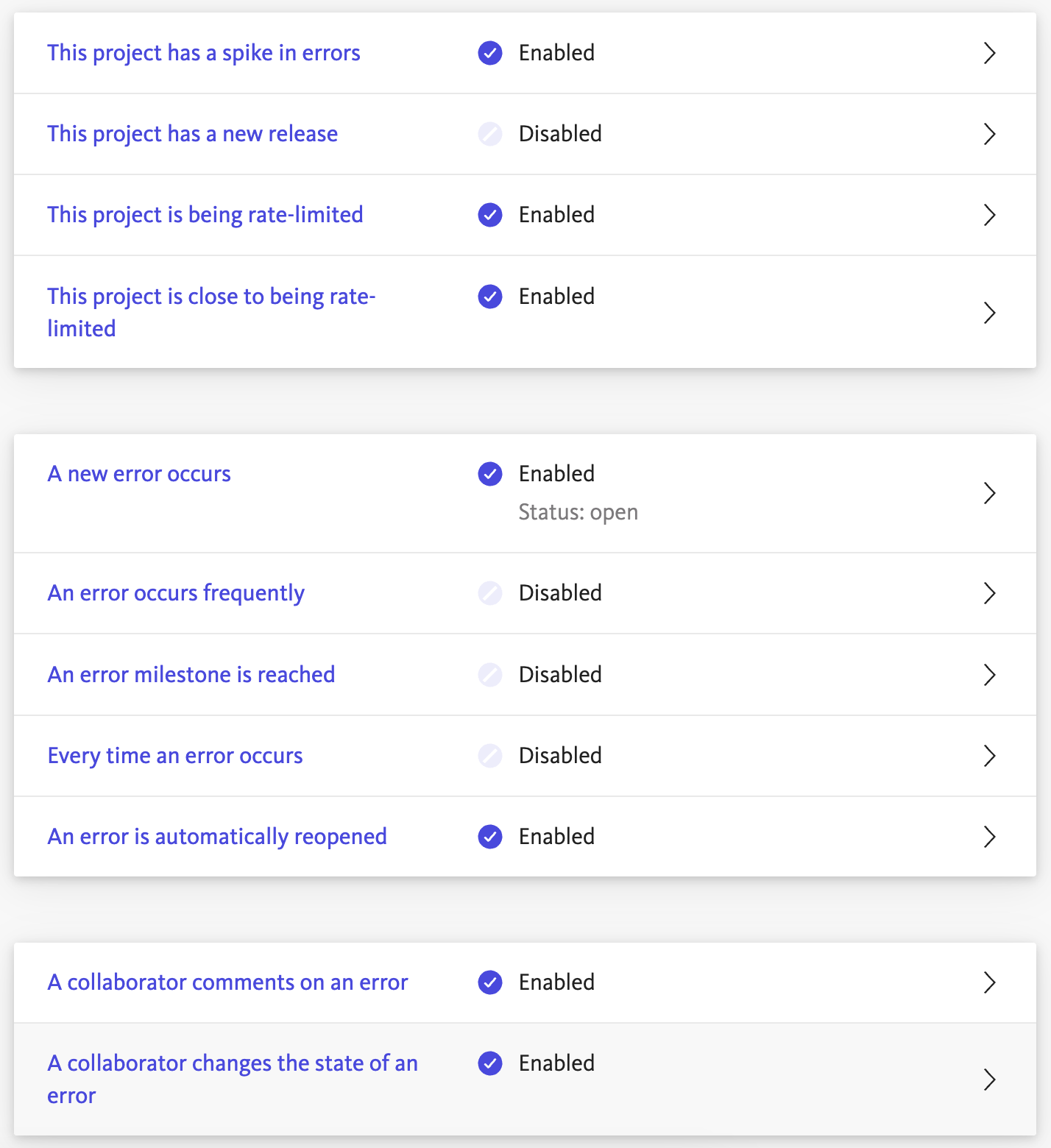PagerDuty
Learn how to setup a BugSnag integration with PagerDuty.
The PagerDuty integration creates incidents in PagerDuty when error activity is reported to BugSnag.
Configuration
In PagerDuty, you can set up a new integration by going to Configuration > Services > Add New Service. Enter “Bugsnag” as the Integration Type and select Add Service. From the Service details page, you will be able to find the Integration Key. This key will be needed to complete setup in BugSnag.
In BugSnag, set up the PagerDuty integration from Project Settings > Incident management, then select PagerDuty from the Available integrations section.
You will be prompted for an Integration Key which you can find in PagerDuty as described in the step above.

To configure real-time alerts and PagerDuty notifications in BugSnag Performance, see our dedicated documentation on Performance Monitors.
Configuring alerts
Select the alerts that you want to receive from the Notify me when section. The following alert types are available:
Project alerts
- This project has a spike in errors will alert you when there is an overall spike in all the errors that match your filter. Learn more >
- This project is being rate-limited will notify you each day when your project is being rate-limited, if you have chosen rate limiting for when you have an event overage.
- This project is close to being rate-limited will notify you when your project is close to being rate-limited, up to once per 2 hour period. This notification is available if you have chosen rate limiting and have a Standard or Enterprise plan.
Error alerts
- A new error occurs will alert you if the first event of an error (per release stage) matches your filters.
- An error occurs frequently will alert you when an error receives x events, or impacts x users, in y hours that match your filters, where you can define the number of events/users (x) and the time interval (y). A maximum of one notification will be triggered per time interval (y).
- An error milestone is reached will alert you when the number of events of an error (per release stage) reaches a milestone, and the event matches your filters. The milestones are the 10th, 100th and 1000th events and then every subsequent 1000th event.
- Every time an error occurs will alert you every time an event matching your filters is received.
- An error is automatically reopened will alert you when an error that has been marked as fixed or snoozed (and matches your filters) receives an event that causes the error to be reopened.
Collaborator alerts
- A collaborator changes the state of an error will alert you when a collaborator on your project manually changes the state of an error that matches your filter, for example marking an error as fixed.

Filter settings
Alerts can configured using Basic filters or Advanced filters.
Basic Filters
Basic filtering for alert is provided for severity, type, and release stage.
- Filter by release stage: Select the release stage(s) that you want to receive alerts about from the Release stage dropdown.
- Filter by type: Receive alerts for either handled or unhandled errors only. Find out more >
- Filter by severity: Select the severity option(s) that you want to include in your filter from the Severity toggle.
- Filter by status: Select the status option(s) that you want to include in your filter from the Status toggle.

Advanced filters
Advanced filtering leverages saved filtersets to enable you to filter an alert based on any field you can filter on using the filter bar. Advanced filtering is available on Preferred and Enterprise plans.
- Create desired filters using the filter bar: From the Inbox or Timeline, create filters to match the errors you want to receive alerts for. Learn more >
- Save filterset: Select + Save current filterset and set a name. Select Share this filterset with my team.
- Select the filterset for your alert: Open the configuration for your desired alert, select Advanced filter, and pick the filterset that you created.
Support
Please contact us if you need help with this integration.